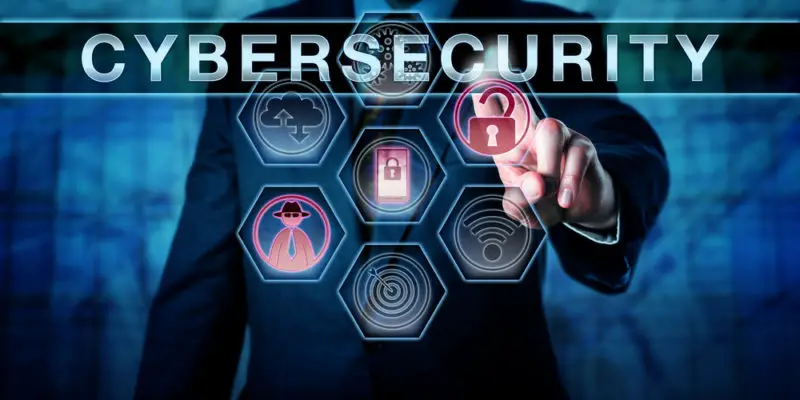In this crazy business world, we can’t ignore the importance of a Business Continuity Plan (BCP). It’s not just a safety net; it’s a strategic imperative that helps us keep the essentials running during disruptions.
By identifying risks and understanding our weaknesses, we can respond better, minimize downtime, and protect our reputation.
A comprehensive business continuity plan ensures we are prepared for unexpected events like natural disasters or cyberattacks. But the process doesn’t stop with a plan on paper.
We must consider how BCPs can adapt to new challenges and what best practices we should adopt for long-term resilience.
Summary
- Keeps the essentials running during and after disruptions, minimizes downtime, and maintains operational integrity.
- Gets organizations ready to respond to risks, including cyber-attacks and natural disasters, faster.
- Does business impact analysis identify critical operations so we can prioritize recovery during a crisis?
- Aligns to industry standards and best practices boost organization and customer confidence.
- Encourages continuous improvement and adaptability of the business continuity plan for long-term stability and competitiveness.
- A comprehensive business continuity plan helps organizations prepare for unexpected events, ensuring long-term resilience and operational stability.
Business Continuity
Business continuity means keeping the essentials running during and after a serious disaster strikes.
Business continuity planning is creating a comprehensive business continuity plan that identifies the critical business functions and recovery procedures.
This plan helps us assess the risks through risk assessments to keep our operations running despite disruptions.
Whether natural disasters, cyber-attacks, or supply chain issues, we can keep delivering our services, even at a minimum.

Why Business Continuity Planning Matters
Business continuity planning is important because we can respond faster to disruptions, minimize downtime, and protect our organization and reputation.
A business continuity plan is important for addressing the risks from disruptive events like cyber attacks and extreme weather.
By doing business continuity management, we can do business impact analysis to identify critical operations and essential functions. We can develop a comprehensive business continuity plan to keep operations running during a crisis.
A business continuity plan protects our assets, makes us more resilient to challenges, and protects our brand and financial stability.
At the end of the day, good crisis management is key to long-term success.
Business Continuity Planning Basics
Our business continuity planning basics must look into risk assessment, business impact analysis (BIA), and business continuity strategies and solutions.
We can develop strategies to keep our organization resilient during a crisis by identifying the risks and their impacts.
Let’s examine how these key components work together to create a comprehensive business continuity plan to maintain market presence and minimize operational disruptions.
Risk Assessment and Business Impact Analysis (BIA)
Risk assessment and business impact analysis are the foundation of a comprehensive business continuity plan that protects our business from disruptions.
By conducting risk assessments, we identify organizational risks that can impact our critical functions. This risk management process helps us understand the impact of disruptions on our financial and operational functions.
At the same time, the business impact analysis identifies and prioritizes the resources and assets needed for recovery.
Together, these assessments will inform our recovery procedures so that we can respond faster to any incident.
Combining risk assessments and business impact analysis into our comprehensive business continuity plan makes us more resilient and prepared for the unexpected.

Business Continuity Strategies and Solutions
We need a comprehensive business continuity plan with strategies and solutions that fit our business.
A business continuity plan has key components like recovery strategies focusing on critical processes.
By having clear communication protocols, we can respond faster to unexpected events.
Risk management helps us identify threats and prioritize our resources.
Our disaster recovery plan also outlines the steps to a successful recovery so we can keep the critical functions.
Combining these business continuity strategies protects our operations and makes us more resilient to future disruptions.
This is key to the long-term survival of our organization.
Business Continuity Planning
Creating a comprehensive business continuity plan requires us to focus on resilience and flexibility across our organization.
A business continuity plan starts with identifying the weaknesses in our current operations. We must know our critical business functions and set recovery time objectives to minimize downtime.
We can use business continuity management software to implement business continuity plans by tracking data backup and recovery processes.
Testing is also a key component in evaluating the plan so that we can fine-tune our strategies.
Business Continuity Standards and Best Practices
Having business continuity standards and best practices in place is critical to ensuring we can respond to disruptions and maintain critical functions.
We should follow the guidelines of the Business Continuity Institute and the International Standards Organization’s ISO 223XX series. This will help us to have a comprehensive business continuity strategy that covers disaster recovery planning and business continuity testing of critical business functions.
By following the standards of the Federal Emergency Management Agency, we can improve our organization, maintain customer confidence, and remain competitive.
Ultimately, implementing business continuity practices and having a comprehensive business continuity plan protects our organization and makes us more resilient to unexpected challenges.
Business Continuity Planning
Business continuity planning is a systematic approach to preparing, responding to, and recovering from disruptions, and a comprehensive plan is essential for this process.
By doing a business impact analysis, we can identify the critical business operations and essential services that need protection.
We need to prioritize business continuity testing, which can range from tabletop exercises to full emergency simulations, to ensure that our plans are working.
Our disaster recovery plans must be able to restore data and support key personnel in the event of natural disasters.
Using cloud technology makes our organization more resilient so we can recover fast and seamlessly.
Regular updates and maintenance of our business continuity plan (BCP) so we are prepared for the unexpected.
Business Continuity Management
Business continuity management is key to maintaining operations and adapting to disruptions, and a comprehensive business continuity plan is essential for this.
By continuously assessing risks, we identify potential threats, such as natural disasters or cyber attacks, that can affect our business processes.
Our continuity plan includes strategies to restore normal operations quickly when a natural disaster occurs, address human error, and meet regulatory requirements.
This is an ongoing process, so we must continuously evaluate and improve to be prepared for anything.
Implementing business continuity management protects our operations and gives us an edge in this fast-paced world.
In the end, prioritizing business continuity makes us more resilient and supports our long-term survival.
Cybersecurity and Business Continuity
As we implement business continuity management we need to integrate robust cybersecurity to protect us from disruptions that can be caused by cyber threats. Cybersecurity is important because it prevents major disruption to our business operations.
A comprehensive business continuity plan should have these measures so our entire organization is prepared. We need to include emergency contact information and protocols for our data center to respond to incidents.
By reviewing and updating our plan regularly we can ensure it is relevant to the evolving threats. Human resources should train our staff on these measures so they can address all the possible disruptions.
Together, we can protect our organization from cyber risks.

Small and Medium-Sized Business and Business Continuity
Small and medium-sized businesses have challenges that make having a business continuity plan crucial to navigate crises.
Business continuity is different for small businesses than for big organizations, especially in how disruptions affect operations.
These businesses rely heavily on their organization’s hardware and resources, which can be severely affected by unexpected weather-related events.
Small and medium-sized businesses will risk downtime and financial loss during crises without a plan. By having a comprehensive business continuity plan, we can ensure our operations will run smoothly despite adversity.
This proactive approach protects our assets and makes us more resilient in this fast-paced business.
Conclusion
We have seen the value of a business continuity plan, and every organization must prioritize it to be operationally resilient in the face of a crisis.
By having a comprehensive business continuity plan, we can reduce the impact of disasters and ensure critical functions are intact during tough times. This proactive approach allows us to maintain our essential processes before, during, and after the disruption.
Moreover, a comprehensive business continuity plan protects our assets and builds trust with stakeholders, customers, and employees.
In summary, investing time and resources in a comprehensive business continuity plan is key to a resilient future. It will allow us to navigate the unknown with confidence and protect our organization’s long-term survival.
FAQs
How Often Should a Business Continuity Plan Be Updated?
We recommend updating a comprehensive business continuity plan at least once a year or whenever there are significant changes in our organization. Regular review helps us be prepared and ensures our strategies are relevant and effective.
Who Should Create the Business Continuity Plan?
We should involve key stakeholders from different departments, including management, IT, and operations, in creating a comprehensive business continuity plan. Their varied perspectives help us identify risks and ensure our plan is relevant to our organization’s capabilities and priorities.
What Kind of Disasters Should the Plan Cover?
A comprehensive business continuity plan should cover natural disasters like floods and earthquakes, technological failures like cyber attacks, and human-made incidents like workplace violence. By considering these scenarios, we can prepare for many types of disruptions.
How to Test a Business Continuity Plan?
We can test our comprehensive business continuity plan by conducting regular drills, simulating real-life scenarios, and evaluating our response. We should also review the plan’s importance and make necessary adjustments based on our findings.
What Tools Can Help in Business Continuity Planning?
We can use tools for a comprehensive business continuity plan, such as risk assessment software, cloud storage for data backup, and scenario simulation tools. These resources will help us identify our vulnerabilities and be prepared for disruptions.

Conclusion
In summary, a comprehensive business continuity plan is a must for any organization that wants to survive disruptions.
It helps us identify risks, maintain critical functions, and protect our assets.
By following best practices and updating our plans regularly, we become more resilient to unexpected events.
This proactive approach protects our financials and builds trust with stakeholders.
Ultimately, investing in our business continuity strategy is a business decision supporting our long-term survival in this fast-paced world.

Chris Ekai is a Risk Management expert with over 10 years of experience in the field. He has a Master’s(MSc) degree in Risk Management from University of Portsmouth and is a CPA and Finance professional. He currently works as a Content Manager at Risk Publishing, writing about Enterprise Risk Management, Business Continuity Management and Project Management.

